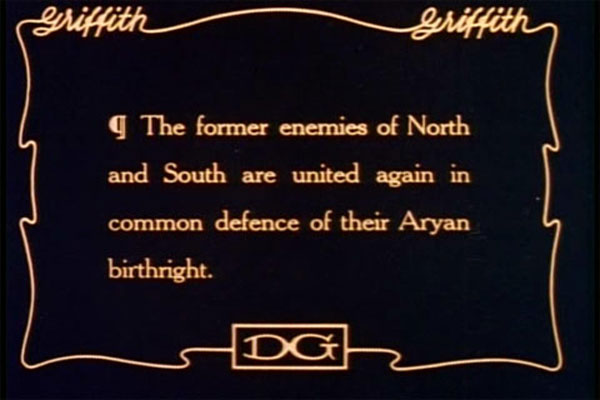The Latest from Boing Boing |  |
- HOWTO make spider-silk thread
- Darth Bank Robber
- The Lives Our Mothers Leave Us, a book about mother-daughter relationships
- Australian government blocks out 90% of document on web-spying plans
- Can you audit the software that goes in your body?
- Sealing tape that looks like hinges
- New Disney Haunted Mansion movie to be produced by Guillermo del Toro
- Wikileaks: the dramatic ballet
- Female Adult Home Entertainment Units Turned into Dueling Weaponry
- Beans are bullets: War-era food posters
- Energy legislation isn't
- Comic-Con: Superheroes vs. Westboro Baptist Church
- #IfAndrewBrietbartEditedIt
- Town grapples with penis mystery
- They fart glitter
- Time, Life and Mad Men
- Chicken Snoop for the Soul
- Deepwater Horizon: Where will the oil go now?
- Fashion! (trippy mid-sixties video clip, mit groovy tune)
- Uniontown, Indiana protestors record license plates and take photos of porn shop patrons
- Killed by being swung around by the heels by a circus clown
- South African doctor invents "anti-rape" female condoms with "teeth"
- Canadian living in Japan makes his own silk
- Flipboard flips bird at bad design -- but also fair use?
- Laser cut wooden lamps in Boing Boing Bazaar
- Smarter algorithms ticket to a fast train
- Parasite lives on shark eyeballs
- Archaeology and the city
- Fart-operated TV remote
- Gangs of women in rural India fight abuse with bamboo sticks
| Posted: 23 Jul 2010 03:12 AM PDT  Love the spiders in your garden? Put the little critters to work for you by turning their abandoned silk webbing into thread: " I have also encountered many abandoned webs, which gave me the idea of harvesting these out-of-use webs for their silk. Having walked into so many webs, I know how unbelievably strong and stretchy their threads are. Spider silk, in fact, is the strongest fiber ever discovered. Spider silk is stronger than steel, for its diameter; that is, a thread of steel would be weaker than a thread of spider silk of the same size." How to make Spider Silk Thread (via Craft) |
| Posted: 23 Jul 2010 03:01 AM PDT  A bank robber dressed as Darth Vader took ripped off a bank in Long Island on Thursday, armed with a semiautomatic (not a lightsaber -- fraud!). 'Darth Vader' Robs Bank on Long Island (Thanks, David!)
|
| The Lives Our Mothers Leave Us, a book about mother-daughter relationships Posted: 23 Jul 2010 12:55 AM PDT  In between blogging and exercising this summer, I've been reading chapters from a book called The Lives Our Mothers Leave Us In between blogging and exercising this summer, I've been reading chapters from a book called The Lives Our Mothers Leave Us
As daughters, we bounce off our mothers in ways that are both mysterious and ancient. Even in anger — maybe especially then — we're tethered to them. My mother and I have never been mild with one another. Whether we were miles apart and blaming each other or strongly and lovingly bonded together, our emotions burned up the color chart. Nothing was ever gray. It's not the most well-written book in the world, but I have found these anecdotes of how these famous daughters dealt with their mothers' imperfections to be helpful benchmarks in observing my own relationship with my mother. Davis is neither preachy nor pedantic; she's simply giving us vignettes from different women's lives, and I like that. |
| Australian government blocks out 90% of document on web-spying plans Posted: 22 Jul 2010 10:35 PM PDT Australia's web-censors have outdone themselves. After Stephen Conroy (the Australian minister notorious for proposing the Great Firewall of Australia) promised greater transparency in his government's efforts to regulate the Internet, they replied to a Freedom of Information request on plans to monitor Australians' internet traffic with a document that was 90 percent blacked out: (Thanks, Itsumishi!)
|
| Can you audit the software that goes in your body? Posted: 22 Jul 2010 10:27 PM PDT The Software Freedom Law Center's latest white-paper, "Killed by Code: Software Transparency in Implantable Medical Devices," examines the strange circumstances around pacemakers and other implanted medical devices. Regulators like the FDA inspect the hardware designs for these devices in great detail, but the crucial software that runs the devices is a closed book -- a proprietary secret that's only ever called in for examination when the devices start to crash, with disastrous circumstances. Killed by Code: Software Transparency in Implantable Medical Devices (via /.) (Image: Medtronic EnRhythm Pacing System, a Creative Commons Attribution (2.0) image from winton's photostream) |
| Sealing tape that looks like hinges Posted: 22 Jul 2010 10:18 PM PDT  Mmiinn's XTape is clear adhesive tape printed with trompe-l'œil hinges, to make it appear that your boxes are sealed with brass hardware. They ship next autumn. XTape (via Super Punch) |
| New Disney Haunted Mansion movie to be produced by Guillermo del Toro Posted: 22 Jul 2010 10:40 PM PDT  Here's an exciting announcement -- Disney is making a feature film based on the Haunted Mansion, the greatest dark-ride ever conceived, to be Yes, I want to believe. Oh please, oh please, oh please, make a movie as kick-ass as the ride. Haunted Mansion Inspires New Movie by The Walt Disney Studios and Guillermo del Toro |
| Wikileaks: the dramatic ballet Posted: 22 Jul 2010 10:05 PM PDT Johannes Grenzfurthner from Austrian mad arts collective Monochrom closed out this year's HOPE conference in NYC with a dramatic presentation about, um, Wikileaks. And unicorns. monochrom: "Wikileaks: The Ballet" (feat. Unicorns) @ The Next HOPE Conference |
| Female Adult Home Entertainment Units Turned into Dueling Weaponry Posted: 22 Jul 2010 08:44 PM PDT |
| Beans are bullets: War-era food posters Posted: 22 Jul 2010 08:30 PM PDT  Cory Bernat has curated an extensive online image gallery of war-era government posters related to food, food production, farming, backyard gardening, and rationing. The images come from the US National Agricultural Library. One thing I noticed: the large number of posters promoting vegetarian protein sources, in order to conserve meat. Another: you know how gluten-free diets are more common nowadays? You'll find many posters in this collection referencing "wheatless" diets, and promoting other carbs like potatoes and corn. And finally, some of these would fit in quite well with my colleague Mark's Made By Hand book. Below, the poster from which the title of this gallery came: "Beans are Bullets." (via Bibliodyssey) |
| Posted: 22 Jul 2010 08:28 PM PDT Energy Bill: A lot like the Holy Roman Empire, in a way. Word came out today on what's going to be in the final Senate |
| Comic-Con: Superheroes vs. Westboro Baptist Church Posted: 22 Jul 2010 08:08 PM PDT  "They've faced down humans time and time again, but Fred Phelps and his minions from the Westboro Baptist Church were not ready for the cosplay action that awaited them today at Comic-Con." |
| Posted: 22 Jul 2010 08:07 PM PDT  • Huckleberry Finn: Affirmative action sends ungrateful black man on river cruise, using lib-approved child labor. (via) • 2001: An intelligent computer heroically stops wasteful government spending on space exploration. (via) • Little Rascals: Juvenile delinquency caused by having black friends. Also, where's Buckwheat's birth certificate? (via) • Aladdin: Swarthy thief flees jail, abducts princess, kills trusted advisor & performs coup d'etat. (via) • Black men stole the rock and roll sound from Marty McFly!!! (via) • MLK's famous speech: "I have a dream that my nation will not be judged by character." (via) • Inglorious Basterds: Deranged Jewish woman murders innocent moviegoers (via) • The Lord of the Rings: Through grit, working class Hobbits take back 'their' Middle America from colored Orcs (via) #IfAndrewBrietbartEditedIt (thanks, Maggie) • Huckleberry Finn: Affirmative action sends ungrateful black man on river cruise, using lib-approved child labor. (via) • 2001: An intelligent computer heroically stops wasteful government spending on space exploration. (via) • Little Rascals: Juvenile delinquency caused by having black friends. Also, where's Buckwheat's birth certificate? (via) • Aladdin: Swarthy thief flees jail, abducts princess, kills trusted advisor & performs coup d'etat. (via) • Black men stole the rock and roll sound from Marty McFly!!! (via) • MLK's famous speech: "I have a dream that my nation will not be judged by character." (via) • Inglorious Basterds: Deranged Jewish woman murders innocent moviegoers (via) • The Lord of the Rings: Through grit, working class Hobbits take back 'their' Middle America from colored Orcs (via) #IfAndrewBrietbartEditedIt (thanks, Maggie) |
| Town grapples with penis mystery Posted: 22 Jul 2010 06:57 PM PDT Someone is adorning a tranquil English town with photographs of a penis. Police think that it may be a protest about something or other: "If this is a self-portrait, the artist won't be in a hurry to be identified." [BBC] |
| Posted: 22 Jul 2010 07:45 PM PDT |
| Posted: 22 Jul 2010 08:55 PM PDT  They don't call The New York Times "The Gray Lady" for nothing, and it isn't like the Gray Lady to shill for a television show. That said, the paper's "Mad Men City" series is a swell look back at the New York City of the early-to-mid '60s, timed to coincide with this weekend's Season 4 premiere of AMC's "Mad Men." (Okay, so technically it's under the umbrella of the paper's "City Room" blog.) Today's installment has it all, nostalgically speaking: A black-and-white print ad from the venerable Benton & Bowles shop for the now-defunct Eastern Airlines, with copy referring to a woman as a "pretty chick." Other entries have focused on the East Side eatery Jimmy's La Grange -- a place so fantastically specific that you had to eat what Jimmy ordered for you, and it was usually Chicken Kiev -- and the ultra-swanky Time & Life Building. For you kids, Life was a magazine. Time still is. But it's hard not to read the name as a commentary on how swiftly time passes in a place like New York, and how thoroughly it effaces what's gone before. They don't call The New York Times "The Gray Lady" for nothing, and it isn't like the Gray Lady to shill for a television show. That said, the paper's "Mad Men City" series is a swell look back at the New York City of the early-to-mid '60s, timed to coincide with this weekend's Season 4 premiere of AMC's "Mad Men." (Okay, so technically it's under the umbrella of the paper's "City Room" blog.) Today's installment has it all, nostalgically speaking: A black-and-white print ad from the venerable Benton & Bowles shop for the now-defunct Eastern Airlines, with copy referring to a woman as a "pretty chick." Other entries have focused on the East Side eatery Jimmy's La Grange -- a place so fantastically specific that you had to eat what Jimmy ordered for you, and it was usually Chicken Kiev -- and the ultra-swanky Time & Life Building. For you kids, Life was a magazine. Time still is. But it's hard not to read the name as a commentary on how swiftly time passes in a place like New York, and how thoroughly it effaces what's gone before. |
| Posted: 22 Jul 2010 07:15 PM PDT "A Carpinteria, CA man has been arrested for allegedly spying on a woman with a camera secretly tucked into her copy of Chicken Soup for the Soul. The 30-year-old woman found the camera trained on her bed through a hole cut into the inspirational volume's spine." (LAT, headline via @ConejoJoe) |
| Deepwater Horizon: Where will the oil go now? Posted: 22 Jul 2010 05:18 PM PDT  Using data from the National Center for Atmospheric Research, Slate has produced a fascinating (and very depressing) interactive model of the Deepwater Horizon oil spill. (thanks, Richard Metzger). |
| Fashion! (trippy mid-sixties video clip, mit groovy tune) Posted: 22 Jul 2010 05:09 PM PDT Video Link. A clip from the mid-sixties German television program "Paris Aktuell". The music is "Teen Tonic" by groovy, experimental musique concrète pioneers Pierre Henry and Michel Colombier, from their 1967 album Messe Pour Le Temps. (thanks, Tom Osborn!) |
| Uniontown, Indiana protestors record license plates and take photos of porn shop patrons Posted: 22 Jul 2010 08:14 PM PDT  Artist Mitch O'Connell snapped a photo of these signs near a Nashville Uniontown, Indiana pornography emporium. The signs were placed there by war-line.net, which runs lots of photos of people who may or may not be customers of the shop. Artist Mitch O'Connell snapped a photo of these signs near a Nashville Uniontown, Indiana pornography emporium. The signs were placed there by war-line.net, which runs lots of photos of people who may or may not be customers of the shop. |
| Killed by being swung around by the heels by a circus clown Posted: 22 Jul 2010 04:29 PM PDT  I have friends who are former circus clowns, and they are the nicest people I know. (Via Mostly Forbidden Zone) |
| South African doctor invents "anti-rape" female condoms with "teeth" Posted: 22 Jul 2010 04:57 PM PDT  Sonnet Ehlers, a doctor in South Africa, has designed, patented, and manufactured an "anti-rape female condom" with the unambiguous brand name Rape-aXe. Women who believe they are at high risk of being raped insert the device into themselves like a tampon, and wear it around indefinitely as a form of protection when anticipating risk. The "teeth" inside cause intense pain and potential injury to a male upon penetration, and basically clamp down, making exit from the device painful. The thing does leave damage. Snip: I'm not sure how I feel about this. The design is ingenious, and it's certainly an interesting thing to talk about in a blog post. But I think I agree with the concerns of critics who say the device isn't a real solution to the problem of rape, and I worry that it could place the women who use it at higher risk for violence from men who find their "parts" trapped in the thing. Without getting too graphic here—other forms of sexual assault are still possible. And beyond that, the idea of carrying this thing around inside one's body is very strange: It's also a form of "enslavement," said Victoria Kajja, a fellow for the Centers for Disease Control and Prevention in the east African country of Uganda. "The fears surrounding the victim, the act of wearing the condom in anticipation of being assaulted all represent enslavement that no woman should be subjected to." That said, have I come up with a better solution? No. I can't fault the device's inventor for at least trying to help women at risk for sexual assault, even if she's doing so in a way I might find odd, imperfect, or unorthodox. Her country, South Africa, has one of the highest number of rapes per capita in the world:
A 2009 report by the nation's Medical Research Council found that 28 percent of men surveyed had raped a woman or girl, with one in 20 saying they had raped in the past year, according to Human Rights Watch.
(Images courtesy of Dr. Ehlers / Thanks, Frikkie Terreblanche!) |
| Canadian living in Japan makes his own silk Posted: 22 Jul 2010 04:21 PM PDT  Yesterday, I wrote a story about some Japanese people who are preserving cool old North American cultural creations. Here's a story about a North American who is preserving a cool old Japanese cultural tradition. When I was in Japan, I read an article by Eriko Arita in The Japan Times about a 46-year-old Canadian fellow named Bryan Whitehead who practices old school silk making in Japan. He does every step himself: 1. Each spring, Whitehead plants the indigo seeds to grow the plants to dye the silk. In the summer, he picks the leaves, dries the leaves, wraps the leaves in straw matting to ferment them for three months, and makes "aidama (raw indigo pigment shaped into balls)." 2. In late summer or early fall he breeds his silkworm moths. He stores the eggs in the refrigerator. In the spring he lets the eggs hatch and raises 5,000 worms. 3. 5,000 silkworms eat "a small truck full of mulberry leaves each day," he says (30 kilograms of leaves). Fortunately Whitehead owns 300 mulberry trees about 15-minutes from his house/shop. 4. After the worms spin their cocoons, Whitehead kills them before they have the chance to chew their way out of the cocoon (and thus ruining the silk threads). The worms are killed by "boiling or drying or salting." 5. He then spins and weaves the silk into fabric. 5,000 cocoons produce enough silk for just one kimono. Whitehead learned about making silk from Minako Kato, "who was then 65 and one of the area's few remaining silk farmers and craftspeople." He says: "I knew it was the last chance for me to be able to learn the technique from her. She is a treasure," Whitehead said. From grubs to kimono: Canadian makes silk in the traditional way | See also: Canadian finds his own silk road Photo by cathyse97. Creative Commons Attribution-NoDerivs 2.0 Generic license. |
| Flipboard flips bird at bad design -- but also fair use? Posted: 22 Jul 2010 04:30 PM PDT Flipboard is an awesome new iPad app that aggregates links from your social network feeds and favorite sites, then renders it as a stunning magazine-like reading experience. But there's a problem: instead of using RSS feeds or other licensed content, it scrapes the web, including large images and original content. It removes ads -- fine for CC-licensed sites but not many others -- but also plans to sell its own ads around that content under rev-share arrangements. In other words, it carries a high probability of going down in beautifully-paginated and typeset flames. Here's Joel Johnson: Take Boston.com's The Big Picture, for instance: Each of those large images come from wire services. It's content paid for by the Boston Globe, licensed from the photo wires with strict limits on how it can be presented and distributed. The Big Picture's RSS feed presents a single image and a description for each collection. View The Big Picture from within Flipboard, however, and you'll find all of the images available, scraped--or "parsed", to use Flipboard's phrasing--to Flipboard's own servers, resized into a grid, and then distributed to every single Flipboard app. Fair use is a murky thing, decided on a case-by-case basis, but it's hard for me to suss a scenario where scraping all of the images from a picture blog and redisplaying them without ads or context would be considered fair use. Moreover, Flipboard is saying they're willing to shut off or rein in how much content they are slurping up if content providers simply ask. That's good, but it's still a possible violation of copyright. Content creators do not have to specifically ask that their copyright not be violated.Rebuilding the web as a more beautiful place is a good thing: it encourages websites to keep their designs simple and limit advertising and other layout cruft. But using that as a device to peel readership away from the web, then insert itself as an advertising middleman, is another thing entirely. Is Flipboard Legal? [Gizmodo] |
| Laser cut wooden lamps in Boing Boing Bazaar Posted: 22 Jul 2010 03:36 PM PDT  Curious Customs' laser cut wooden lamps are attractive and inexpensive. They would fit right in a Pasadena Arts & Crafts bungalow, but they would improve the decor of a gas station lavatory, too. The Lotus Lantern above costs $30. See all the offerings in the Makers Market / Boing Boing Bazaar. |
| Smarter algorithms ticket to a fast train Posted: 22 Jul 2010 03:13 PM PDT  What makes European trains run on time? No, not fascism. It's ARRIVAL—Algorithms for Robust and online Railway optimization: Improving the Validity and reliAbility of Large scale systems. Besides being the world's most tortured acronym, ARRIVAL is a new EU program aimed at using technology to manage transportation systems more efficiently. The idea is to create timetables that allow more trains to move faster through existing infrastructure, with fewer delays. Succeed at that, and you make mass transit‐an important element in sustainable development—more appealing to potential riders. "The algorithms have not only cut waiting time between trains from four minutes to two on the Berlin underground network, but have also been used to draw up a new timetable for the Dutch national railway system, which handles 5,500 trains per day. In Switzerland, the system has been used to optimise a schedule so that additional trains may operate on high-risk sections of track, while trials at the Italian stations of Palermo and Genoa have reduced delays by 25%. " There's actually a lot of similar work—based both on new, smarter timetables and on policy changes that allow for faster communication and better-protected right-of-ways—going on in the American Midwest. This approach is especially important here, because, without it, we're kind of stuck in a catch-22, where nobody wants to spend money on new infrastructure for an inter-city train system that sucks—but the system is likely to continue to suck without some kind of serious improvement. Planet Green: Meet the Algorithm that Cut Delays in Half for German Trains Image courtesy Flickr user jpmueller99, via cc |
| Parasite lives on shark eyeballs Posted: 22 Jul 2010 02:39 PM PDT The Parasite of the Day: Ommatokoita elongata, a dangly, tassel-like creature that attaches itself to the eyeballs of sharks. Supposedly, this does not especially bother the sharks. Is there a German word for "something that gives other people the screaming heebie-jeebies, but about which the person actually affected does not care"? (Via hectocotyli) |
| Posted: 22 Jul 2010 02:14 PM PDT  From plow furrows in Sheridan Square to the foundations of a 17th-century City Hall/local pub (man, wouldn't that make council meetings more fun?), this nifty map traces some of the most fascinating finds in New York City urban archaeology. |
| Posted: 22 Jul 2010 10:38 AM PDT On Instructables, Schmidtn posted how-to instructions for his Fart Operated Random Channel TV Remote.
|
| Gangs of women in rural India fight abuse with bamboo sticks Posted: 22 Jul 2010 01:41 PM PDT Slate has a fascinating story about gulabis — gangs of women in rural India who wear pink saris seeking justice for abused wives. 40-year old Sampat Pal Devi started the movement with a few friends in 2006. They began by visiting a few husbands who refused to stop beating their wives, intimidating them into changing their minds by brandishing bamboo sticks. The movement now has more than 200,000 members; Pal travels from village to village on a bicycle to keep the momentum going. As the article points out, women who suffered from human rights abuses like honor killings, infanticide, and child marriages would take their own lives to escape their fate. But recent progress in the political arena — like an affirmative action bill passed in March that would reserve 33% of parliamentary seats for woman — has made women realize that they can find power in numbers and fight back. The silver lining here is that while Indian democracy is too weak to deliver on the gender equality that is inscribed in its constitution, it is strong enough not to crush movements like the pink gang. This is also thanks to the free media, which has boomed since the '90s and which glorifies the work of the gulabis.The women's gangs of India [Slate] |
| You are subscribed to email updates from Boing Boing To stop receiving these emails, you may unsubscribe now. | Email delivery powered by Google |
| Google Inc., 20 West Kinzie, Chicago IL USA 60610 | |

 The federal government has censored approximately 90 per cent of a secret document outlining its controversial plans to snoop on Australians' web surfing, obtained under freedom of information (FoI) laws, out of fear the document could cause "premature unnecessary debate".
The federal government has censored approximately 90 per cent of a secret document outlining its controversial plans to snoop on Australians' web surfing, obtained under freedom of information (FoI) laws, out of fear the document could cause "premature unnecessary debate".  In 2008, the Supreme Court of the United States' ruling in Riegel v. Medtronic, Inc. made people with IMDs even more vulnerable to negligence on the part of device manufacturers.4 Following a wave of high-profile recalls of defective IMDs in 2005, the Court's decision prohibited patients harmed by defects in FDA-approved devices from seeking damages against manufacturers in state court and eliminated the only consumer safeguard protecting patients from potentially fatal IMD malfunctions: product liability lawsuits. Prevented from recovering compensation from IMD-manufacturers for injuries, lost wages, or health expenses in the wake of device failures, people with chronic medical conditions are now faced with a stark choice: trust manufacturers entirely or risk their lives by opting against life-saving treatment.
In 2008, the Supreme Court of the United States' ruling in Riegel v. Medtronic, Inc. made people with IMDs even more vulnerable to negligence on the part of device manufacturers.4 Following a wave of high-profile recalls of defective IMDs in 2005, the Court's decision prohibited patients harmed by defects in FDA-approved devices from seeking damages against manufacturers in state court and eliminated the only consumer safeguard protecting patients from potentially fatal IMD malfunctions: product liability lawsuits. Prevented from recovering compensation from IMD-manufacturers for injuries, lost wages, or health expenses in the wake of device failures, people with chronic medical conditions are now faced with a stark choice: trust manufacturers entirely or risk their lives by opting against life-saving treatment. 



 My Pops really enjoys two things; 1) channel surfing and 2) farting. So one day I was over at Hackaday and read about a guy who used his Arduino to turn a TV on and off with one of those brainwave reading headsets. Then later on that same day I was here at Instructables and a fellow had made an office chair that twitters every time he farted. So, I got to thinking and decided to mash those two hacks into one remote that changes the TV to a random channel every time he tutes!
My Pops really enjoys two things; 1) channel surfing and 2) farting. So one day I was over at Hackaday and read about a guy who used his Arduino to turn a TV on and off with one of those brainwave reading headsets. Then later on that same day I was here at Instructables and a fellow had made an office chair that twitters every time he farted. So, I got to thinking and decided to mash those two hacks into one remote that changes the TV to a random channel every time he tutes!  Pal has a long list of criminal charges against her, including unlawful assembly, rioting, attacking a government employee, and obstructing an officer in the discharge of duty, and she even had to go into hiding. Her feistiness has secured notable victories for the community, however. In 2008, the group ambushed the local electricity office, which was withholding electricity until members received bribes or sexual favors in return for flicking the switch back on. The stick-wielding gulabi stormed the company grounds and proceeded to rough up the staff inside the building. An hour later, the power was back on in the village.
Pal has a long list of criminal charges against her, including unlawful assembly, rioting, attacking a government employee, and obstructing an officer in the discharge of duty, and she even had to go into hiding. Her feistiness has secured notable victories for the community, however. In 2008, the group ambushed the local electricity office, which was withholding electricity until members received bribes or sexual favors in return for flicking the switch back on. The stick-wielding gulabi stormed the company grounds and proceeded to rough up the staff inside the building. An hour later, the power was back on in the village.
No comments:
Post a Comment